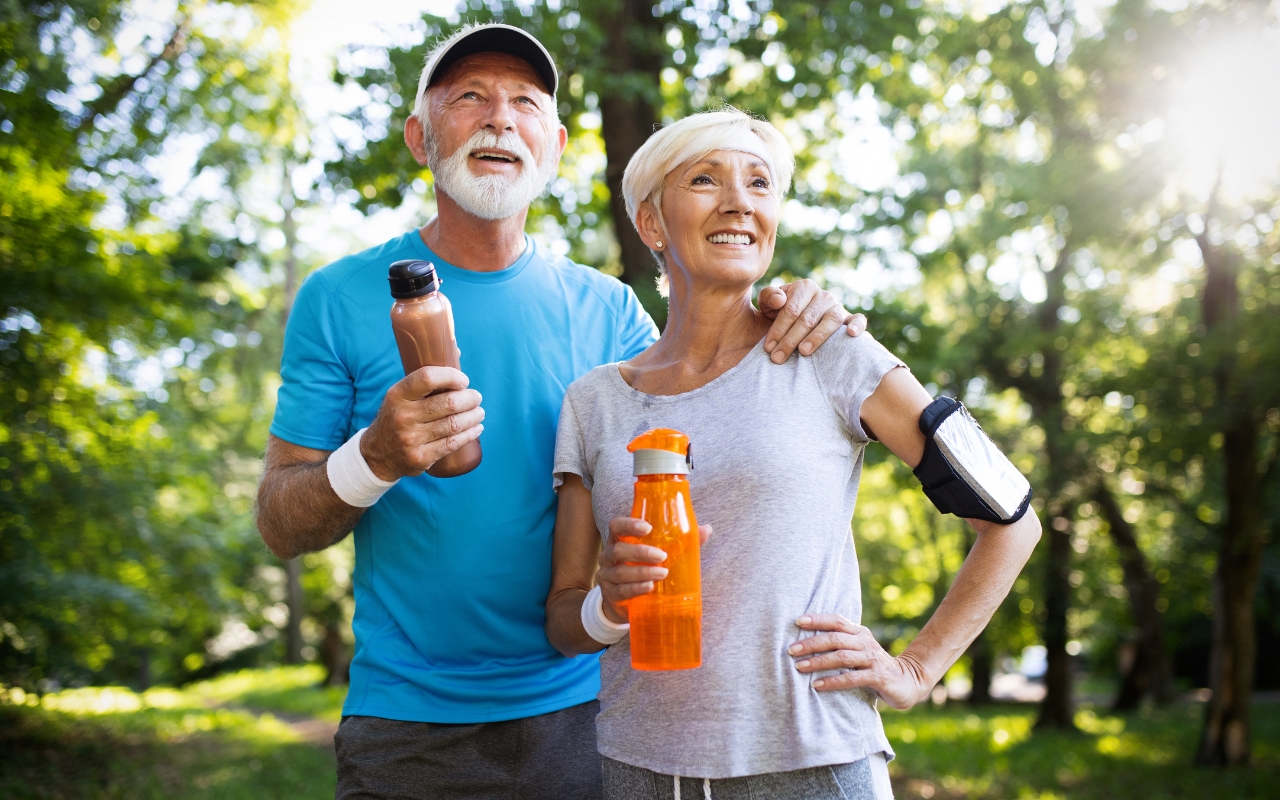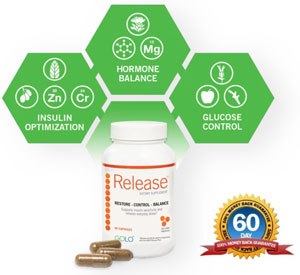Fitness
What are the best exercises for older adults?
Published
2 years agoon
By
mbkteam
As people age, maintaining physical health becomes increasingly important. Exercise and physical activity are pivotal in ensuring that older adults stay healthy, maintain their independence, and improve their overall quality of life. This comprehensive guide will explore various aspects of exercise and physical activity for older adults, providing valuable insights and actionable tips.
Physical activity encompasses any bodily movement that expends energy, including daily chores, walking, and recreational sports. Exercise, on the other hand, specifically refers to planned, structured, and repetitive movements aimed at improving or maintaining physical fitness. Both exercise and physical activity play critical roles in enhancing physical and mental well-being.
The Importance of Exercise for Older Adults
Regular physical activity provides numerous benefits for older adults. Engaging in consistent exercise can help prevent chronic diseases such as heart disease, stroke, type 2 diabetes, and certain cancers. It can also mitigate the effects of existing chronical conditions by improving overall health and functional capacity. Additionally, exercise enhances mental health by reducing symptoms of depression and anxiety, boosting mood, and improving cognitive function.
Older adults who exercise regularly tend to have better balance, coordination, and flexibility, which reduces the risk of falls—a leading cause of injury among this demographic. Exercise also promotes bone health, helping to prevent osteoporosis and fractures. Beyond the physical and mental health benefits, staying active fosters social interaction and independence, which are crucial for emotional well-being.
Types of Exercise for Older Adults
A well-rounded exercise routine for older adults should incorporate four primary types of exercise: aerobic, strength, balance, and flexibility. Each type offers unique benefits and collectively contributes to overall fitness.
Aerobic Exercise: Also known as cardiovascular exercise, aerobic activity enhances cardiovascular health, improves lung capacity, and increases stamina. Activities such as walking, swimming, cycling, and dancing are excellent forms of aerobic exercise. The Centers for Disease Control and Prevention (CDC) recommends at least 150 minutes of moderate-intensity aerobic activity or 75 minutes of vigorous-intensity activity per week.
Strength Training: Strength or resistance training is vital for maintaining muscle mass, which naturally declines with age. Increased muscle strength supports daily activities and improves metabolic health. Strength training exercises can be performed using body weight, resistance bands, free weights, or gym machines. It is recommended to engage in strength training exercises at least twice a week.
Balance Exercises: Balance exercises are crucial for preventing falls and maintaining stability. Activities like tai chi, yoga, and specific balance exercises such as standing on one foot or heel-to-toe walking can significantly enhance balance. Incorporating balance exercises into daily routines can help older adults navigate uneven surfaces and avoid falls.
Flexibility Exercises: Flexibility exercises help maintain the range of motion in joints and muscles, making everyday activities more manageable and reducing the risk of injuries. Stretching exercises, yoga, and Pilates are effective ways to improve flexibility. It's beneficial to include flexibility exercises in daily routines, ensuring each stretch is held for at least 10-30 seconds.
Getting Started with an Exercise Program
Starting an exercise program can be daunting for older adults, especially for those who have been inactive for a while. However, with careful planning and gradual progression, anyone can safely begin and maintain a fitness routine.
Consult a Healthcare Provider: Before starting any new exercise regimen, it is essential to consult with a healthcare provider, especially for individuals with existing health conditions. A healthcare provider can provide personalized advice and ensure that the exercise plan is safe and suitable.
Set Realistic Goals: Setting SMART (Specific, Measurable, Achievable, Relevant, and Time-bound) goals can help maintain motivation and track progress. Start with small, achievable goals and gradually increase the intensity and duration of exercises.
Create a Balanced Routine: A well-balanced exercise routine should include activities from all four types of exercise: aerobic, strength, balance, and flexibility. This approach ensures comprehensive fitness and addresses all aspects of physical health.
Listen to Your Body: It is crucial to listen to the body and avoid pushing too hard, which can lead to injuries. Start slowly and increase the intensity and duration of exercises gradually. If any pain or discomfort occurs, stop the activity and consult a healthcare provider.
Staying Motivated
Maintaining motivation can be challenging, but there are several strategies to help older adults stay committed to their exercise routines.
Find Enjoyable Activities: Engaging in enjoyable activities can make exercise feel less like a chore. Whether it's dancing, gardening, or swimming, finding activities that bring joy can increase adherence to an exercise program.
Exercise with a Buddy: Exercising with friends or family members can make physical activity more enjoyable and provide accountability. Group classes and community programs are also excellent ways to meet new people and stay motivated.
Track Progress: Keeping an activity log or using a fitness tracker can help monitor progress and provide a sense of accomplishment. Celebrating small milestones can boost motivation and encourage continued commitment.
Mix It Up: Variety is key to preventing boredom. Mixing different types of exercises and trying new activities can keep the routine interesting and enjoyable.
Overcoming Common Barriers
Older adults often face barriers to exercise, including health issues, fear of injury, lack of motivation, and limited access to facilities. Addressing these barriers can help create a sustainable and enjoyable exercise routine.
Health Issues: For those with chronic health conditions, it is essential to choose activities that accommodate their limitations. Consulting with healthcare providers and seeking guidance from fitness professionals can help create a safe and effective exercise plan.
Fear of Injury: Starting with low-impact exercises like walking or swimming can reduce the risk of injury. Using proper equipment, wearing appropriate footwear, and performing exercises with correct form are also important for injury prevention.
Lack of Motivation: Setting realistic goals, finding enjoyable activities, and exercising with a buddy can help overcome a lack of motivation. Additionally, understanding the numerous health benefits of exercise can provide a powerful incentive to stay active.
Limited Access to Facilities: Many exercises can be done at home with minimal equipment. Resistance bands, small weights, and body-weight exercises are effective and require little space. Online workout videos and virtual fitness classes offer convenient options for staying active at home.
Adapting Exercises for Different Abilities
Physical ability varies widely among older adults, and it is essential to adapt exercises to individual capabilities. Here are some tips for modifying exercises based on different abilities:
Mobility Issues: For those with limited mobility, chair exercises can be an effective way to stay active. Many strength and flexibility exercises can be performed while seated, reducing the risk of falls and providing support.
Chronic Conditions: Individuals with chronic conditions should choose low-impact activities that accommodate their limitations. For example, water aerobics is excellent for arthritis sufferers, as the buoyancy of water reduces joint stress.
Balance Problems: Older adults with balance issues can use support, such as holding onto a chair or countertop, while performing balance exercises. Gradually, as balance improves, they can reduce reliance on support.
Mental Health Benefits of Exercise
Exercise not only benefits physical health but also significantly impacts mental well-being. Regular physical activity has been shown to reduce symptoms of depression and anxiety, improve mood, and enhance cognitive function. The release of endorphins during exercise creates feelings of happiness and euphoria, often referred to as the “runner's high.”
Additionally, engaging in group exercises promotes social interaction and combats loneliness and isolation, which are common among older adults. The sense of community and belonging that comes from participating in group activities can improve overall mental health and emotional well-being.
Fun Ways to Stay Active
Staying active doesn't have to be limited to traditional exercise routines. There are numerous fun and engaging ways to incorporate physical activity into daily life:
Dancing: Dancing is a fantastic way to stay active while having fun. Whether it's joining a dance class, dancing with family members, or simply dancing around the house, it's an enjoyable way to get moving.
Gardening: Gardening is a productive and enjoyable way to stay active. It involves various physical activities like digging, planting, and weeding, which provide a good workout.
Playing with Grandchildren: Spending time with grandchildren can be a wonderful way to stay active. Activities like playing catch, going to the park, or simply walking around the neighborhood can provide both exercise and quality family time.
Walking: Walking is one of the easiest and most accessible forms of exercise. Exploring new trails, walking with a friend, or even participating in walking clubs can make walking more enjoyable.
Volunteering: Many volunteer activities involve physical movement, such as community clean-up events or helping at local shelters. Volunteering not only provides physical activity but also promotes a sense of purpose and community involvement.
Resources and Support
Numerous resources are available to support older adults in their fitness journey. Organizations like the National Institute on Aging provide valuable information and guidelines on exercise for older adults. Websites such as Healthline and AARP offer practical tips, workout routines, and motivational content to help older adults stay active.
Community centers, senior centers, and fitness clubs often offer specialized classes and programs designed for older adults. These programs provide a supportive environment and professional guidance, making it easier to stay committed to an exercise routine.
Conclusion
Maintaining an active lifestyle is essential for older adults to preserve their health, independence, and quality of life. By incorporating a variety of exercises, setting realistic goals, and staying motivated, older adults can enjoy the numerous physical and mental health benefits that come with regular physical activity. Adaptations and modifications can ensure that exercise is accessible and safe for individuals of all abilities. With the right approach and support, staying active can be a rewarding and enjoyable part of life for older adults.













